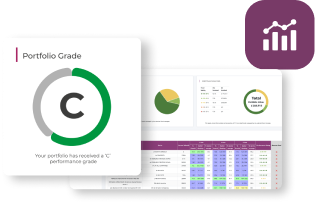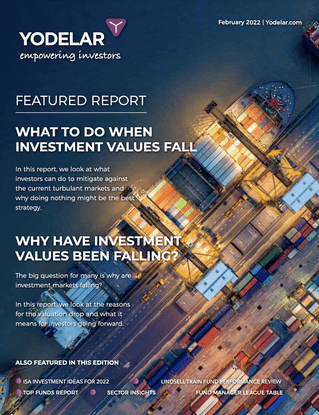-
Many portfolios that appear diversified contain multiple funds with near-identical holdings, creating hidden concentration risks.
-
Overlapping funds often expose investors to the same stocks, regions, and styles — reducing the benefits of true diversification.
-
Duplication across funds means investors may pay multiple fees to access the same companies, undermining cost-efficiency.
-
Our analysis regularly uncovers portfolios with a wide range of funds but limited exposure to varied market factors or regions.
-
A well-diversified portfolio should focus on complementary exposures, not just fund quantity — and is best built with clear structure and professional oversight.
A portfolio that includes a broad range of investment funds may appear, at first glance, to be well diversified. With multiple fund groups, different strategies, and a variety of asset labels, it can give the impression of balance and risk control.
However, this surface-level variety often masks a deeper problem. Many portfolios contain funds that repeatedly invest in the same underlying holdings. Despite appearing diverse, the portfolio becomes heavily concentrated in a limited group of stocks, sectors or styles. This overlap creates a structural weakness known as false diversification - where the portfolio looks well spread but in reality is overly reliant on a narrow set of exposures.
In this article, we explore the causes and consequences of fund overlap, why it undermines true diversification, and how investors can build more resilient portfolios by focusing on meaningful differences in fund composition rather than surface-level variety.
Why It Happens: The Misuse of Past Performance
Past performance is an important metric. When assessed correctly, it can help identify funds and managers that have delivered consistent results across a range of market conditions. But problems arise when recent returns are taken at face value and used in isolation to guide fund selection.
Too often, portfolios are built around the strongest performers of the last one, three or five years without considering the underlying drivers of that performance. These funds are frequently concentrated in the same parts of the market, such as US large-cap growth or thematic technology, which may have benefited from specific macroeconomic conditions rather than broad-based manager skill.
This leads to a portfolio that appears diversified but is structurally narrow. While the funds may differ in name or marketing message, many will be heavily exposed to the same stocks or market factors.
The tendency to extrapolate recent trends is a natural one. A fund that has performed well feels reassuring to hold. But unless that performance has been tested across different market environments, there is a risk that it reflects a short-term trend rather than long-term quality.
For example, funds heavily exposed to US technology stocks delivered strong returns during the low-rate, growth-led cycle of the 2010s. While some managers added value through selection and timing, much of the outperformance was driven by a favourable backdrop that may not persist.
Used thoughtfully, past performance can highlight durability and discipline. But when used without context, it can result in portfolios that are concentrated, exposed, and ill-prepared for the next market cycle.
When Past Success Clouds Future Decisions
Portfolios built primarily around recent top-performing funds can appear robust, but they often share a common risk - exposure to the same underlying holdings or market segments that have already experienced strong upward trends. While past performance can help identify funds that have shown consistency, relying on it without considering current valuations or forward-looking risk can lead to portfolios that are concentrated and vulnerable.
Funds that performed well in the same market conditions may now be fully valued, or in some cases, overpriced. Continuing to allocate heavily to these areas may reduce future return potential and increase sensitivity to a shift in market leadership. A more effective approach would be to assess whether those funds still represent value, and to consider rebalancing towards areas that have lagged but offer better long-term prospects.
This type of reallocation, however, is often emotionally difficult. Selling recent winners feels counterintuitive, and buying into funds that have underperformed can seem uncomfortable. But markets are cyclical. Over time, leadership tends to rotate, and portfolios that are too heavily tilted towards yesterday’s out-performers often struggle when market dynamics change.
True forward-looking portfolio construction requires discipline. It means using past performance as a guide to assess fund quality across different cycles, rather than as a shortcut to predict future winners. The risk of focusing too heavily on what has worked most recently is that the portfolio becomes geared towards the last cycle, not the next one.
The Illusion of Diversification
Owning multiple funds is often mistaken for being well diversified. But if those funds hold the same underlying stocks, the diversification is only on the surface. A portfolio might contain a dozen funds, yet if many of them are heavily invested in companies such as Apple, Microsoft, Nvidia and Alphabet, the investor remains exposed to a narrow group of holdings.
This kind of overlap is more common than many realise. Different fund providers, varying product names and a range of investment narratives can give the impression of balance. But when we look deeper, we often find portfolios built around the same core exposures.
At Yodelar, we see this regularly through our portfolio analysis service. Investors come to us with what appears to be a well-diversified mix of funds, only for our analysis to reveal significant duplication and concentration in a single region or investment style. This results in portfolios that are more vulnerable to market shifts and less likely to benefit from true diversification.
It is not just stock-level overlap that creates this risk. Portfolios tilted towards a single style - such as growth - and focused only on developed markets often lack exposure to other important return drivers like value strategies, smaller companies or emerging economies. This reduces the number of opportunities within the portfolio and increases the chance that all holdings will respond the same way when market conditions change.
True diversification is not defined by how many funds you own, but by how different they are from each other.
If you are unsure how well your portfolio is really diversified, request a free portfolio analysis from our team. Our detailed reviews highlight overlap, identify weaknesses and help you build a strategy that is better positioned for long-term success.
The Cost of Duplication
One of the less visible consequences of fund overlap is the impact it has on cost-efficiency. When multiple funds in a portfolio hold the same underlying companies, the investor is effectively paying several fund managers to invest in the same stocks.
This duplication becomes particularly inefficient when those funds charge active management fees. Rather than paying for differentiated insight or unique positioning, the investor ends up paying multiple times to access the same large-cap holdings - companies like Apple, Microsoft, or AstraZeneca, which are widely held across global and UK-focused funds alike.
From a cost-to-value perspective, this undermines the benefit of diversification. The investor may believe they are paying for variety and risk control, but in practice, they are often paying for replication.
At Yodelar, our free portfolio analysis service regularly highlights these inefficiencies. We frequently review portfolios that hold the same core stocks. This kind of overlap not only concentrates risk, but also inflates costs without delivering additional benefit.
Identifying and removing duplication can help streamline a portfolio, reduce unnecessary fees, and ensure that each fund plays a distinct and valuable role within the overall strategy.
The Principles of True Diversification
True diversification involves spreading investment risk across a broad range of independent factors. This includes a mix of asset classes such as equities, bonds and real assets, exposure to both developed and emerging markets, and a balance across different investment styles like growth, value, quality and momentum. It also means including companies of varying sizes, from large-cap through to mid and small-cap.
() Large-cap companies are the biggest and most established firms on the market – well-known names like Apple or Unilever. They tend to be more stable, widely owned by investors, and often form the core holdings in global and UK equity funds. Small-cap companies, by contrast, are much smaller and often less familiar. They can grow more quickly, offering higher return potential, but usually come with greater risk and price swings.
Achieving this level of diversification requires a structured, top-down approach to portfolio construction. Rather than starting with the funds that have performed best recently, the process should begin with identifying the types of exposures that will bring balance to the portfolio. These exposures can then guide the selection of suitable funds.
Fund selection remains important, but it should serve the broader portfolio structure. Each fund should play a defined role in delivering a specific type of exposure, rather than being chosen simply because it has outperformed over a short period.
This approach helps create a more resilient portfolio. Different regions, sectors and styles tend to perform well at different times. By holding a well-constructed mix, investors reduce the risk of overcommitting to a single trend or market phase. This can help smooth returns over time and increase the likelihood of achieving long-term objectives, even if it occasionally involves holding funds that are temporarily out of favour.
Conclusion
Past performance remains an important part of fund analysis. When used appropriately, it helps identify managers and strategies that have delivered consistent outcomes across different market conditions. But performance alone is not enough. Without understanding the structure of a portfolio and the exposures within it, investors can end up with collections of funds that look diverse but behave in very similar ways.
This false sense of diversification often leads to portfolios that are concentrated in a small number of stocks, sectors or investment styles - increasing risk and reducing resilience. A well-diversified portfolio should combine past performance insight with forward-looking balance, ensuring exposure across a variety of uncorrelated return drivers.
Effective diversification is not about how many funds you hold, but about how those funds complement one another. It requires clear structure, defined roles, and careful consideration of how different elements interact.
At Yodelar, we help investors analyse their portfolios to identify fund overlap, assess quality, and highlight where changes could improve long-term performance. Through our partnership with MKC Wealth, investors also gain access to a team of experienced financial planners who can provide a personalised review of their portfolio and identify high-quality opportunities aligned with their wider financial planning goals.
If you are unsure how well your portfolio is truly diversified, request a free portfolio analysis with our team and take a clear step toward building a more efficient and resilient investment strategy.
















